Abstract
In a prospective study, 31 patients with brown recluse spider bites were treated by either immediate surgical excision or with the leukocyte inhibitor, dapsone, followed by delayed surgical excision. Patients were matched for age, gender, and lesion size and were excluded if the typical history and physical findings were not present. In patients treated with immediate surgical excision (N = 14), delayed wound healing (N = 5) and objectional scarring (N = 7) were common complications. However, pretreatment treatment with dapsone reduced the incidence of wound complications (N = 1) and objectional scarring (N = 1) (p less than 0.05), while reducing the need for surgical excision (N = 1). There were no severe drug reactions due to dapsone, although one patient had persistent G.I. upset. Pretreatment with dapsone not only reduced surgical complications but also improved the outcome of patients bitten by the brown recluse spider.
Full text
PDF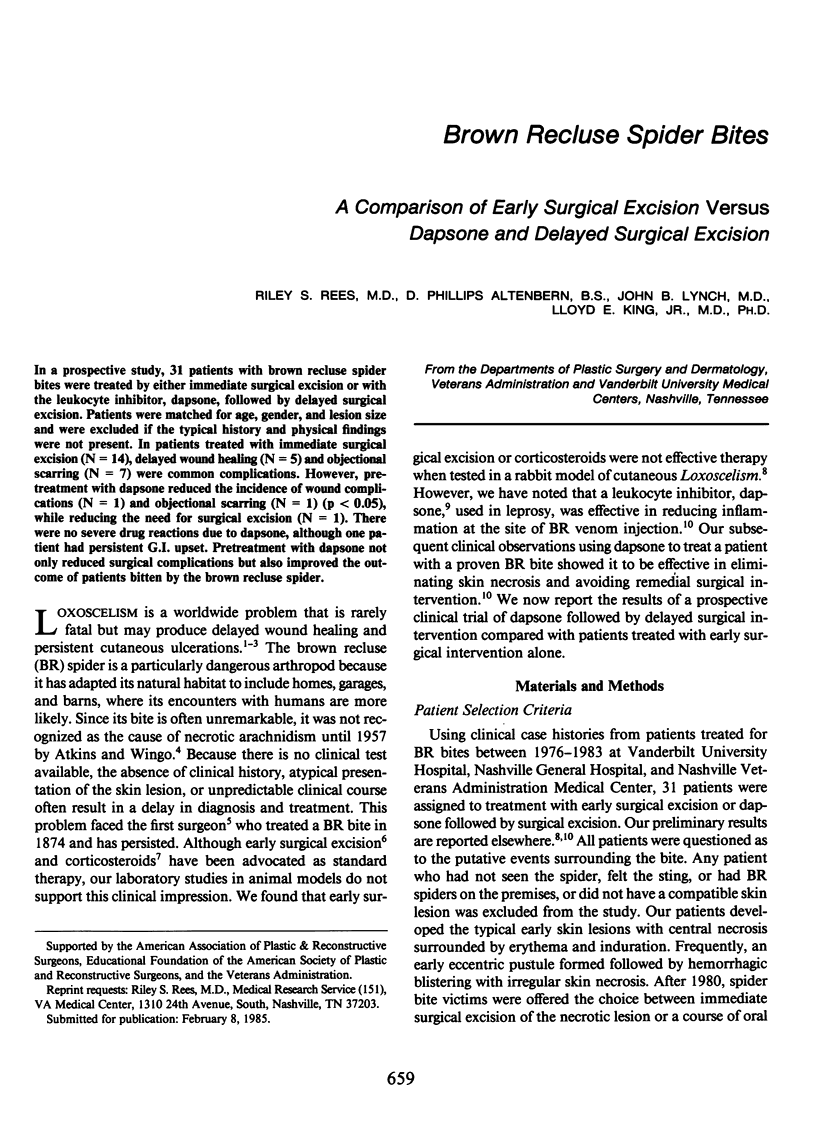
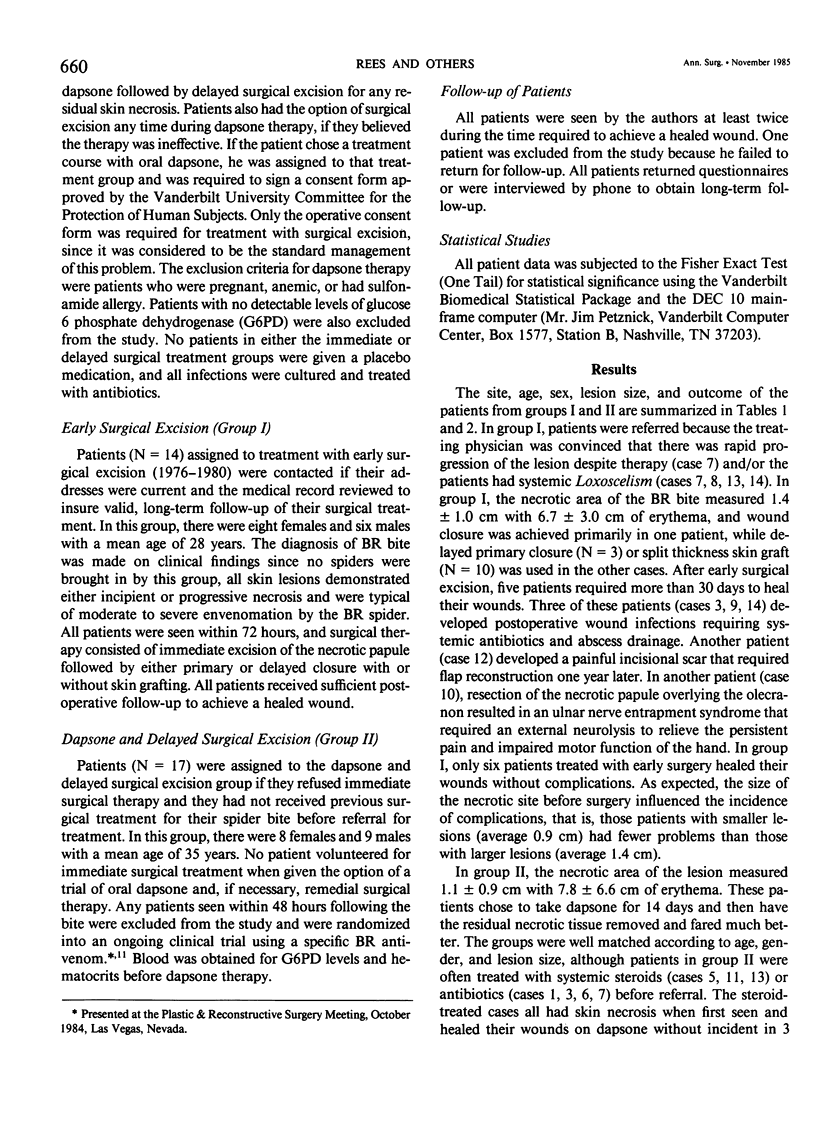
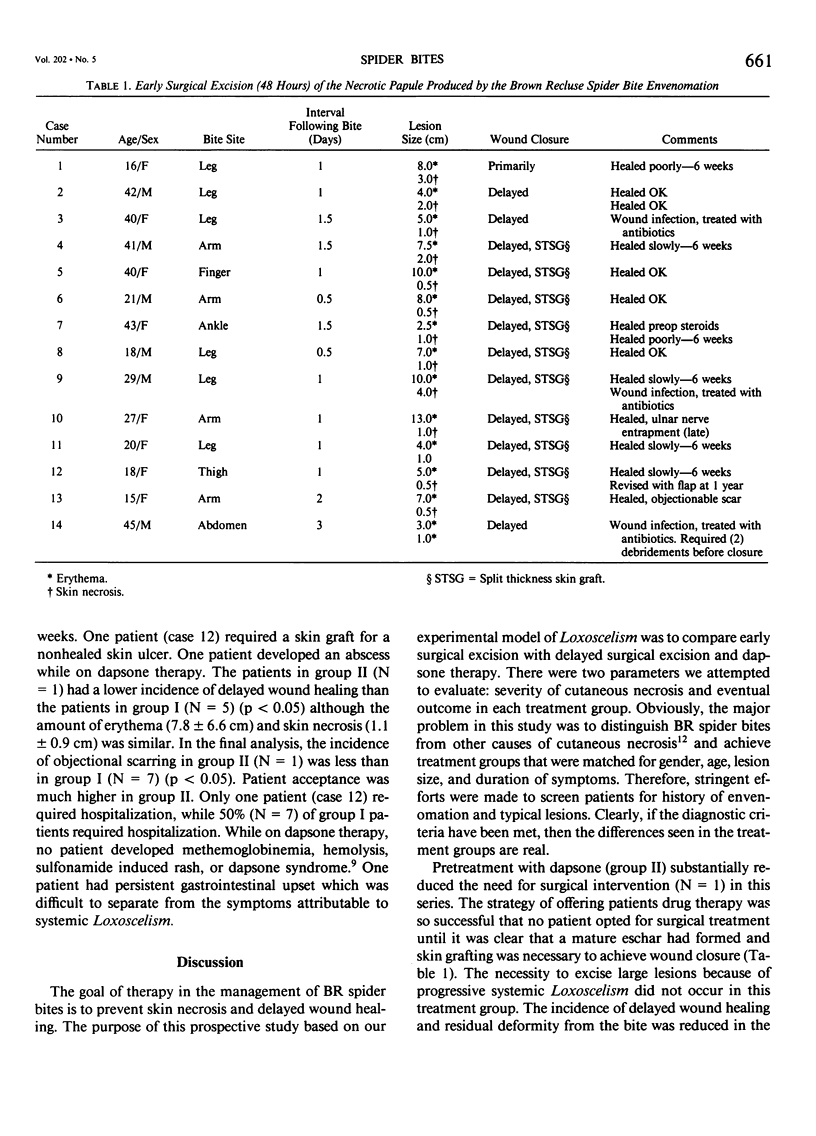
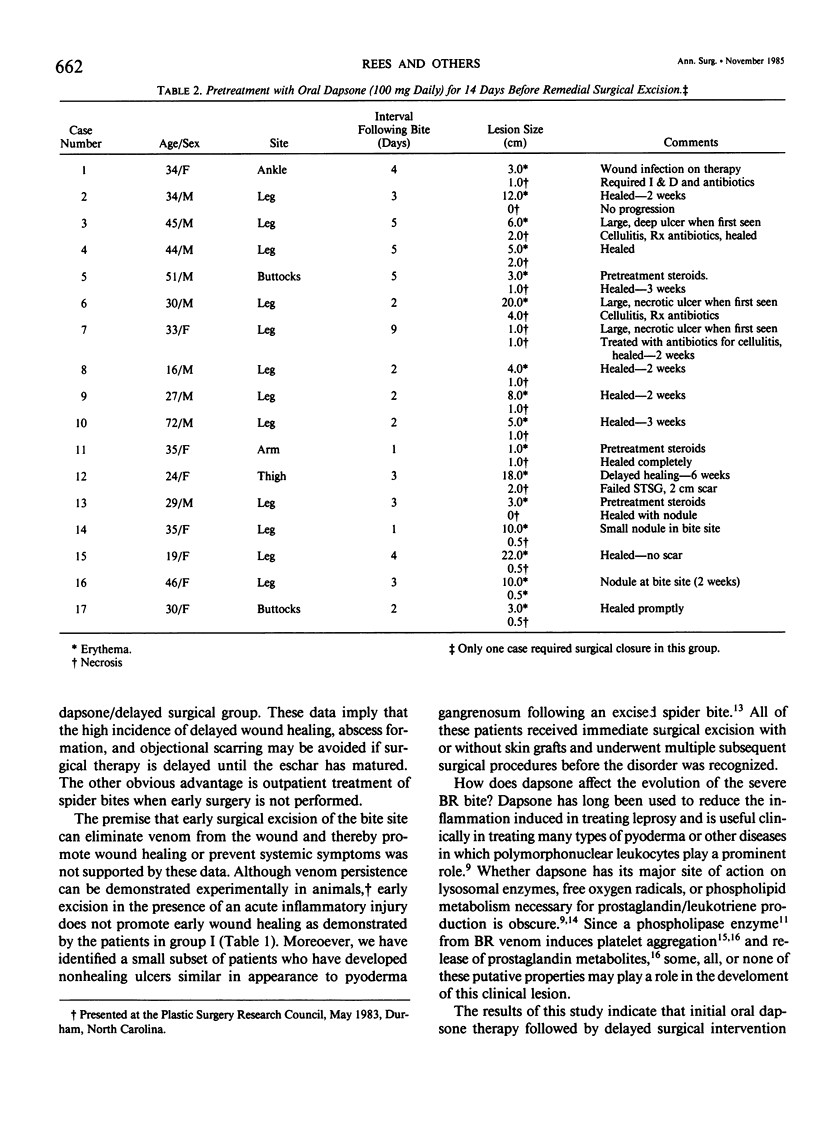
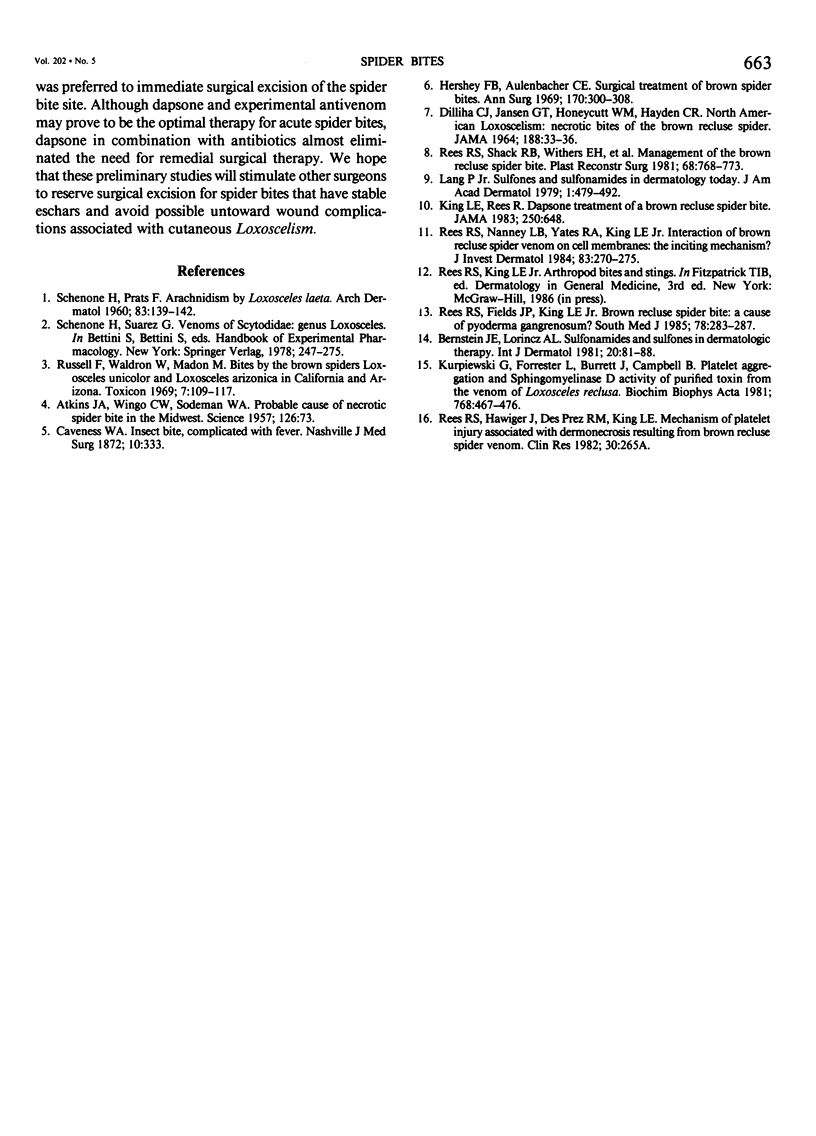
Selected References
These references are in PubMed. This may not be the complete list of references from this article.
- ATKINS J. A., WINGO C. W., SODEMAN W. A. Probable cause of necrotic spider bite in the Midwest. Science. 1957 Jul 12;126(3263):73–73. doi: 10.1126/science.126.3263.73. [DOI] [PubMed] [Google Scholar]
- Bernstein J. E., Lorincz A. L. Sulfonamides and sulfones in dermatologic therapy. Int J Dermatol. 1981 Mar;20(2):81–88. doi: 10.1111/j.1365-4362.1981.tb00406.x. [DOI] [PubMed] [Google Scholar]
- DILLAHA C. J., JANSEN G. T., HONEYCUTT W. M., HAYDEN C. R. NORTH AMERICAN LOXOSCELISM. NECROTIC BITE OF THE BROWN RECLUSE SPIDER. JAMA. 1964 Apr 6;188:33–36. [PubMed] [Google Scholar]
- Hershey F. B., Aulenbacher C. E. Surgical treatment of brown spider bites. Ann Surg. 1969 Aug;170(2):300–308. doi: 10.1097/00000658-196908000-00022. [DOI] [PMC free article] [PubMed] [Google Scholar]
- King L. E., Jr, Rees R. S. Dapsone treatment of a brown recluse bite. JAMA. 1983 Aug 5;250(5):648–648. [PubMed] [Google Scholar]
- Kurpiewski G., Forrester L. J., Barrett J. T., Campbell B. J. Platelet aggregation and sphingomyelinase D activity of a purified toxin from the venom of Loxosceles reclusa. Biochim Biophys Acta. 1981 Dec 18;678(3):467–476. doi: 10.1016/0304-4165(81)90128-8. [DOI] [PubMed] [Google Scholar]
- Lang P. G., Jr Sulfones and sulfonamides in dermatology today. J Am Acad Dermatol. 1979 Dec;1(6):479–492. doi: 10.1016/s0190-9622(79)80088-2. [DOI] [PubMed] [Google Scholar]
- Rees R. S., Fields J. P., King L. E., Jr Do brown recluse spider bites induce pyoderma gangrenosum? South Med J. 1985 Mar;78(3):283–287. doi: 10.1097/00007611-198503000-00012. [DOI] [PubMed] [Google Scholar]
- Rees R. S., Nanney L. B., Yates R. A., King L. E., Jr Interaction of brown recluse spider venom on cell membranes: the inciting mechanism? J Invest Dermatol. 1984 Oct;83(4):270–275. doi: 10.1111/1523-1747.ep12340340. [DOI] [PubMed] [Google Scholar]
- Rees R., Shack R. B., Withers E., Madden J., Franklin J., Lynch J. B. Management of the brown recluse spider bite. Plast Reconstr Surg. 1981 Nov;68(5):768–773. doi: 10.1097/00006534-198111000-00018. [DOI] [PubMed] [Google Scholar]
- Russell F. E., Waldron W. G., Madon M. B. Bites by the brown spiders Loxosceles unicolor and Loxosceles arizonica in California and Arizona. Toxicon. 1969 Sep;7(2):109–117. doi: 10.1016/0041-0101(69)90073-7. [DOI] [PubMed] [Google Scholar]
- SCHENONE H., PRATS F. Arachnidism by Loxosceles laeta. Report of 40 cases of necrotic arachnidism. Arch Dermatol. 1961 Jan;83:139–142. doi: 10.1001/archderm.1961.01580070145016. [DOI] [PubMed] [Google Scholar]


